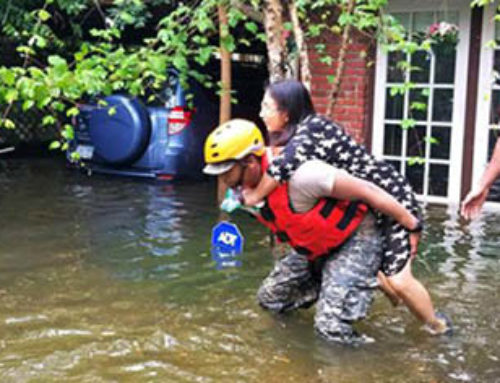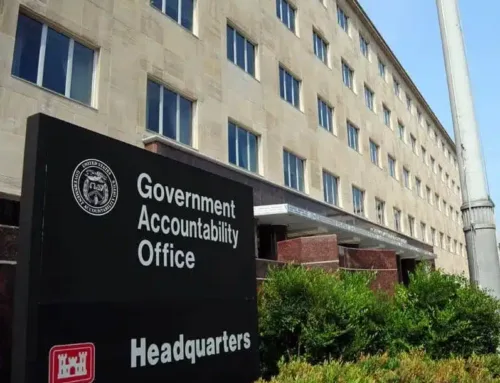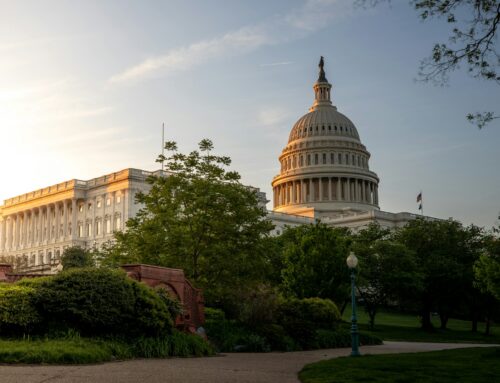The Atlantic hurricane season began June 1st and the National Oceanic and Atmospheric Administration (NOAA) predicts it will be an active one. In their May forecast, NOAA pointed to a combination of factors, including warmer-than-normal water from a receding El Niño, ideal wind patterns from a developing La Niña, and the effects of climate change, that make the conditions ripe for more frequent and powerful storms than normal. NOAA predicts that there is an 85% chance of an above-average season, with 17-25 named storms, meaning storms that reach at least tropical storm strength, and the potential for four to seven major hurricanes, which reach category 3 or higher. As storms have become more frequent and more intense due to climate change, the financial risk to taxpayers has grown immensely, with federal programs designed for disaster response growing increasingly strained. This is particularly true for programs that deal with managing flooding.
For a variety of reasons, the National Flood Insurance Program (NFIP), a cornerstone of the United States’ approach to managing flood risk, stands at a crossroads. Established half a century ago to provide access to primary flood insurance and mitigate the nation’s comprehensive flood risk, the NFIP has more than 4.7 million policies providing almost $1.28 trillion in coverage, and it collects about $4.3 billion in annual premium revenue. Over time, it has evolved into a program that not only identifies and maps flood hazards but also plays a crucial role in community resilience and flood-risk reduction.
As regular Weekly Wastebasket readers know, the program’s financial standing has long been a subject of concern. Since Hurricane Katrina in 2005, the program has repeatedly borrowed from the Treasury to pay for claims from catastrophic events. The NFIP’s debt stands at a staggering $20.5 billion, even after $16 billion worth of debt was cancelled by Congress in 2017. In the face of increasing flood risks, this financial instability underscores the need to focus on the program’s future solvency and effectiveness.
In 2021 the Federal Emergency Management Agency (FEMA) announced Risk Rating 2.0, an effort to tie premiums more closely to actual flood risk and a significant step towards improving the NFIP’s actuarial soundness. An overhaul of the premium calculation system, this new methodology is an attempt to measure individual properties’ flood risk more accurately than the previous flood zone system. Fully implemented by 2022, it incorporates a range of factors including flood frequency, property-specific features, and the cost to rebuild, which the previous system did not include. This change is expected to create a fairer distribution of premiums and improve the NFIP’s financial stability.
However, this is not enough. Since 2017, the NFIP has been operating under a series of short-term extensions, 30 to be exact. It is currently operating under yet another temporary extension until September 30, 2024. Congress should seize this as an opportunity to reauthorize the NFIP and address its longstanding challenges. Specific goals should include tackling the program’s debt, enhancing affordability, and encouraging broader participation from both property owners and the private insurance market.
One area Congress should consider is expanding affordability and participation. While Risk Rating 2.0 aims to make premiums more reflective of actual risk, concerns about affordability persist, particularly for low-income households in high-risk areas. Congress could address this by introducing means-tested assistance programs to help those most in need afford their premiums. By making insurance more affordable for low-income households, these programs could increase participation in the NFIP, leading to a larger pool of policyholders, spreading the risk and potentially increasing the total amount of premiums collected.
Encouraging broader participation could also reduce the government’s expenditures on disaster assistance after floods. If more people have insurance coverage, fewer may need to rely solely on federal disaster assistance following a flood event. This is critical for two major reasons. One, post-disaster assistance for individuals is very small compared to potential flood insurance payouts. Having flood insurance can help individuals rebuild their life in a less vulnerable way. Second, the flood insurance policies and requirements can help individuals and communities to mitigate future flood risk, reducing the need for post-disaster flood insurance payments.
Greater affordability measures for targeted groups could also promote mitigation efforts. This is analogous to Community Disaster Resilience Zones (CDRZs) at FEMA, centered around building disaster resilience by driving federal, public, and private resources to the most at-risk and in-need jurisdictions. By making NFIP insurance more affordable, more homeowners might reasonably be incentivized to invest in mitigation measures that reduce their flood risk, which could lead to fewer claims and lower costs for the NFIP in the long run.
The NFIP’s goal is to transfer some of the financial risk from property owners to the federal government. We are usually skeptical of transferring private risk onto taxpayers because in the past it has led to risky and wasteful development, and flood insurance is no exception. Despite the intention of guiding construction away from flood-prone areas, the availability of artificially cheap federal insurance has subsidized development in these areas, increasing the risk of devastating floods and the associated costs.
The NFIP does not charge rates that would generate a reserve fund to cover claims for extreme events; instead, it largely borrows from the Treasury as well as in recent years purchases reinsurance to partially cover large claim years. Problem is “extreme” has become much more regular and landed the program heavily in debt to taxpayers.
Reauthorization of the NFIP presents a moment to address its financial challenges and adapt to the escalating threats posed by climate change. Enhancing affordability and broadening participation are critical strategies to lower the long-term costs of the NFIP by expanding the risk pool and promoting proactive mitigation measures. More specifically, means-tested assistance programs can ensure that flood insurance is accessible to low-income households in high-risk areas. This, in turn, can lead to a more robust and financially stable NFIP, capable of withstanding the economic impacts of catastrophic flood events without overburdening taxpayers.










Get Social